
E-course
Setting SMART goals
Module 1 | Unit 2
Introduction
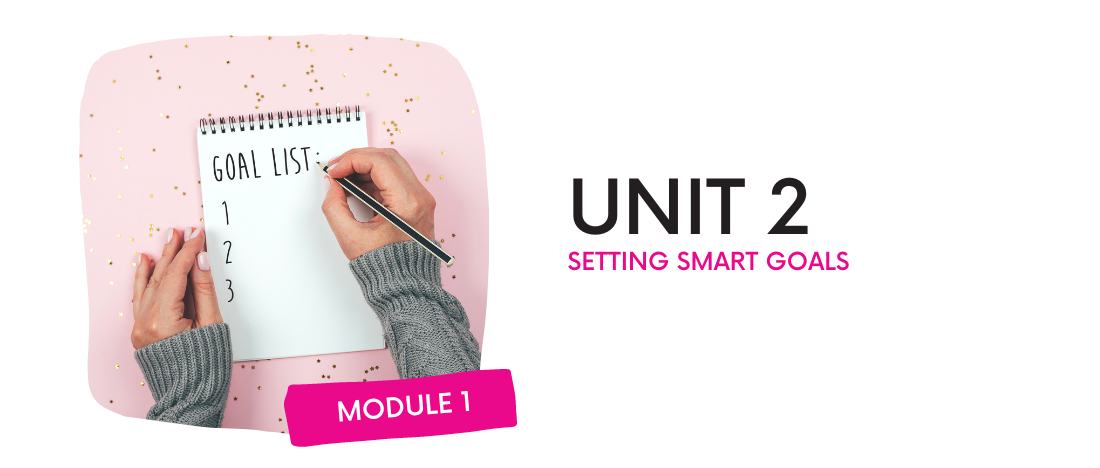
When you keep trying to achieve something but you keep hitting the wall you must start asking yourself: “Have I set the right goal?”, because setting the right goals is the key to success! With that in mind SMART method was developed.
What are SMART Goals?
- Statements of the important results you are trying to accomplish
- Designed in a way to foster clear and mutual understanding of what constitutes expected levels of performance and successful professional development
Through this procedure you can have a complete guide on how to structure your goals so they can be attainable.

Getting started

Tips

SMART is actually an acronym that you can use to guide your goal setting and help you accomplish them.
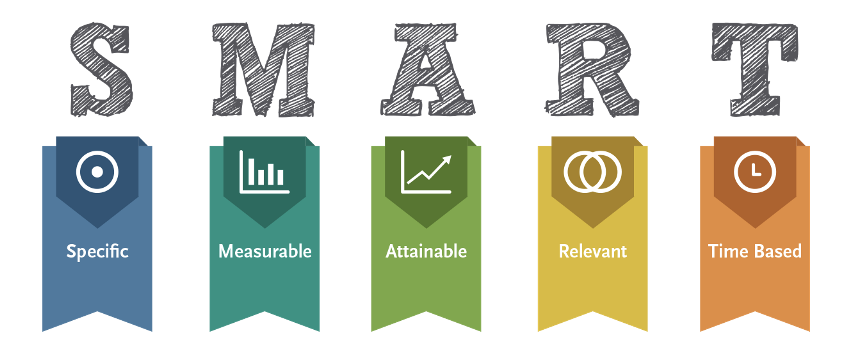
Which are the SMART criteria?
| Specific | What will be accomplished? What actions will you take? |
| Measurable | What data will measure the goal? (How much? How well?) |
| Attainable | Is the goal doable? Do you have the necessary skills and resources? |
| Relevant | How does the goal align with broader goals? Why is the result important? |
| Time based | What is the time frame for accomplishing the goal? |
Therefore, a SMART goal incorporates all of these criteria to help focus your efforts and increase the chances of achieving your goal.
Now let’s do a further analysis through each component.
1. Specific
If you want your goals to be effective, they must be specific and clear. Less specific goals are difficult to define and will take longer to achieve. To make a goal specific, the five “W” questions must be considered,
- Who is involved in this goal in order to be achieved?
- What do I want to accomplish? Think what you are trying to accomplish, be focused on this and don’t be afraid to get very detailed.
- Where is this goal to be achieved? (Many times, this question may not apply, especially if you’re setting personal goals)
- When do I want to achieve this goal? It is important to set a time frame.
- Why do I want to achieve this goal?
Asking these questions helps you get to the heart of what you are seeking.
“S” actions may include: Update, Write, Upgrade, Process, Develop, Manage, Create, Plan, Implement, Evaluate, Produce.
Example: Imagine that you are currently a university student, and you’d like to participate in an ERASMUS programme for six months in Germany. A specific goal could be, “I want to learn German in order to apply for this programme next year”.
2. Measurable
What metrics will you use to determine whether you have achieved the target? A SMART goal should have criteria for measuring progress. Evaluating progress helps you determine if you are on track to achieve your goal or if you are just wasting time. It also helps you stay focused and meet your deadlines. Measurement methods can be both quantitative (productivity results, money saved or earned, etc.) and qualitative (knowledge, soft skills, etc.). To make a goal measurable, ask yourself:
- How many/much?
- How do I know if I have reached my goal?
- What is my indicator of progress?
Example: Imagine that you attend a language course. During the learning process you should evaluate your progress with tests. The results of the tests measure if you achieve to gain better knowledge in Grammar or in Vocabulary, if you fill your gaps or if you need to make more effort.
3. Achievable
Think about how important this goal is to you and whether it is achievable. So, a SMART goal should push you to expand your skills by challenging you, but keep you grounded. In addition, when you set an achievable goal, you may be able to identify previously overlooked opportunities or resources that can bring you closer to it.
To set an achievable goal, you usually need to answer questions such as:
- How can I accomplish this goal?
- How feasible is the target?
- Do I have the means and capacities to achieve the goal? If not, what am I missing?
Example: Imagine that you would like to apply for a Master’s degree; however, knowledge of French is required. You decide to start an intensive French course in order to qualify for the following year. You should consider whether you have the money to pay for the course or whether you have time to learn the language to an acceptable level for the requirements of the Master’s degree, etc.
4. Relevant
A common problem you may face is having too many goals at the same time. In this case you need to pursue your most important goals at any given time. We all need support and help to achieve our goals, but it is important to maintain control over them. So, make sure that your actions drive everyone forward, but that you are still responsible for achieving your own goal.
A relevant goal can answer “yes” to these questions:
- Does it seem worthwhile?
- Is it a good timing to do it?
- Does this align with my other efforts/needs?
Example: Imagine that you have just found a job as employee in a business with expertise in research. You would like to learn a new language and now you have the money to pay the courses. Let’s say that your priority is a new language learning or a training relevant to the topic of your new job position. Also, you should consider whether your new timework schedule is suitable and have enough free time to start the training.
5. Time-bound
Setting goals is easy, but if it does not have a realistic timetable there will be no sense of urgency, therefore less motivation to achieve the goal. Providing a target date for milestone deliverables is essential so you know how to stay on track within a defined timeframe.
Ask yourself:
- Does my goal have a deadline?
- By when do I want to achieve my goal?
- What can I accomplish in this time period?
Example: Imagine that you are going to move to Italy for studies in the following months. You do not know Italian; however, your bachelor studies will be in English. Your deadline in order to gain basic knowledge of Italian is 3 months.
Consider whether it is more efficient to start Italian language in Italy in order to have the opportunity for daily practice.
When you use SMART, you can create clear, achievable and meaningful goals and create the motivation, action plan and support needed to reach them. In addition, the SMART technique helps you go beyond your skills, provides you with a path to follow and, finally, helps you organize and achieve your goals.

More resources

Still want to continue learning about the topic of this unit? Not to worry, we have made a selection of further resources that you can use if you would like to find out more. Just click on the links and keep learning!
- SMART Goals analysis video
- Achieve More by Setting Smart Goals video
- More information: https://www.smartsheet.com/blog/essential-guide-writing-smart-goals
- More information: https://corporatefinanceinstitute.com/resources/knowledge/other/smart-goal/
- Small TED talk about the importance of setting right goals
Practical tasks
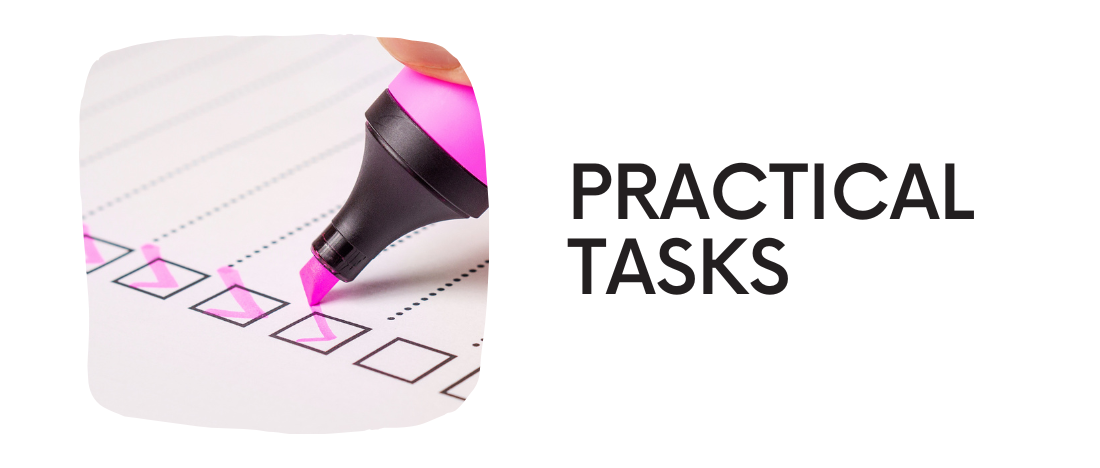
After reading the unit, now try to implement the following tasks:
 Think about what made you choose your goal. Write a small paragraph containing about 10 sentences that lists the top 5 reasons.
Think about what made you choose your goal. Write a small paragraph containing about 10 sentences that lists the top 5 reasons.
Adapt your goals to a specific pattern using the 5 W questions as a guide. Be very specific because if you are not, then your goal won’t be either.
Set at least 3 indicators to help you measure your progress. Keep in mind that the indicators you set should correspond to your learning level. Setting too high or too low indicators can slow down your progress.
Make a chart of the goals you need to achieve and set a specific deadline for each one of them. Use a checklist to monitor your progress. Alternatively, you can make a timeline of your goals.
Complete the following template to get a more comprehensive picture of the context of your SMART goals:
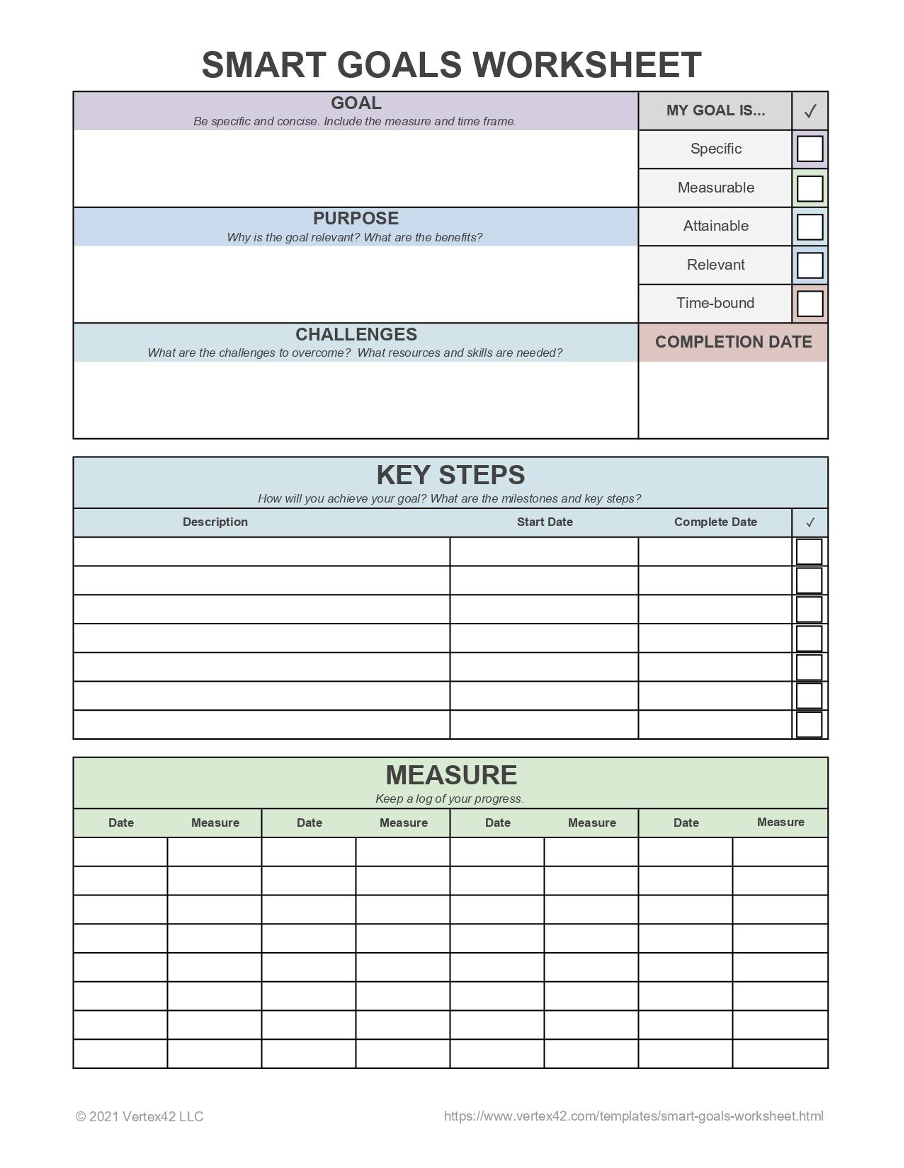
-
Evaluate yourself. Fill out the following template at the beginning and at the end of the Unit.
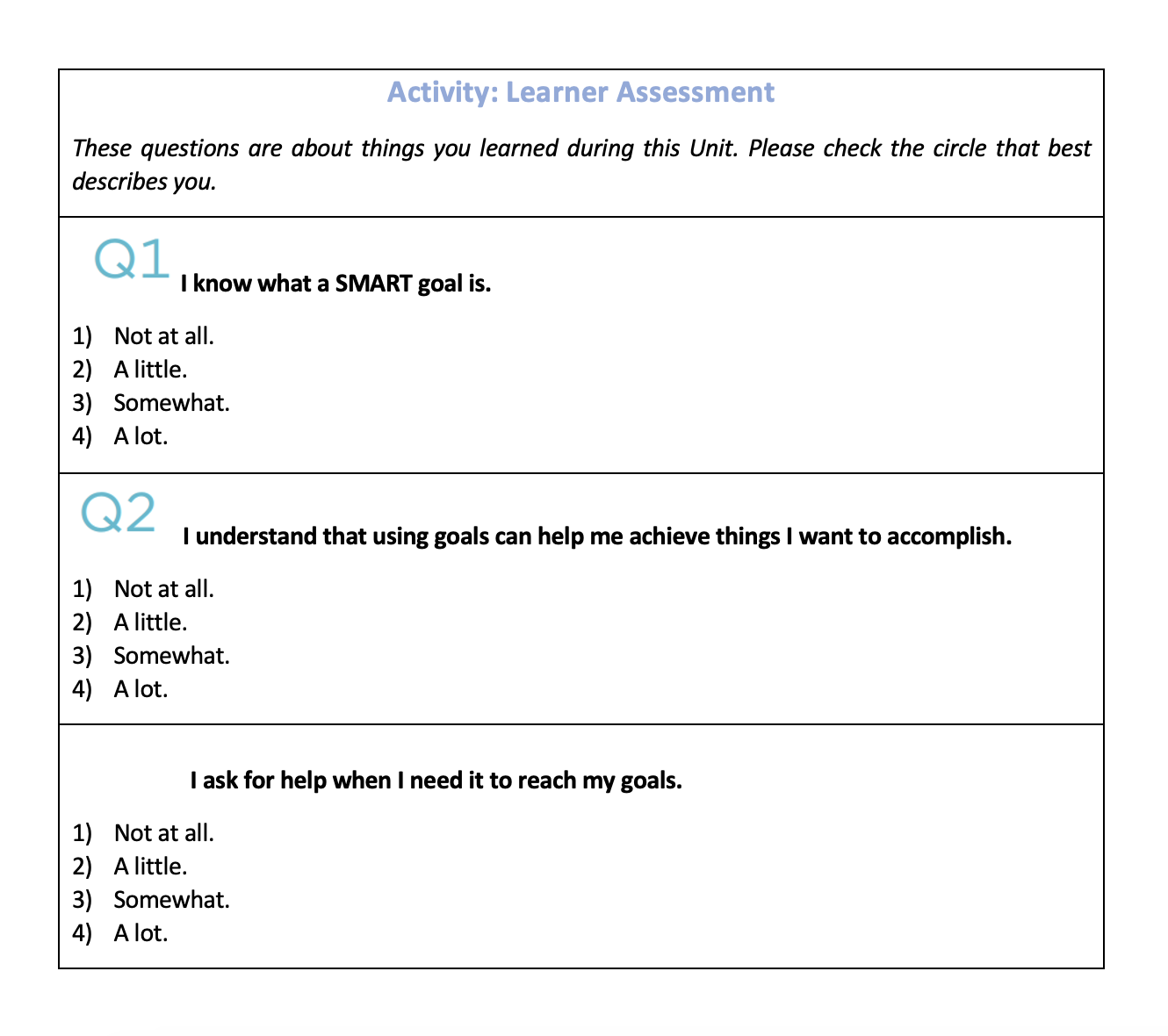
Unit test

